The Best Tanning Drops We've Tried for a Skin-Safe, Sun-Kissed Glow
Faux tans are where it’s at.

Sophia Vilensky
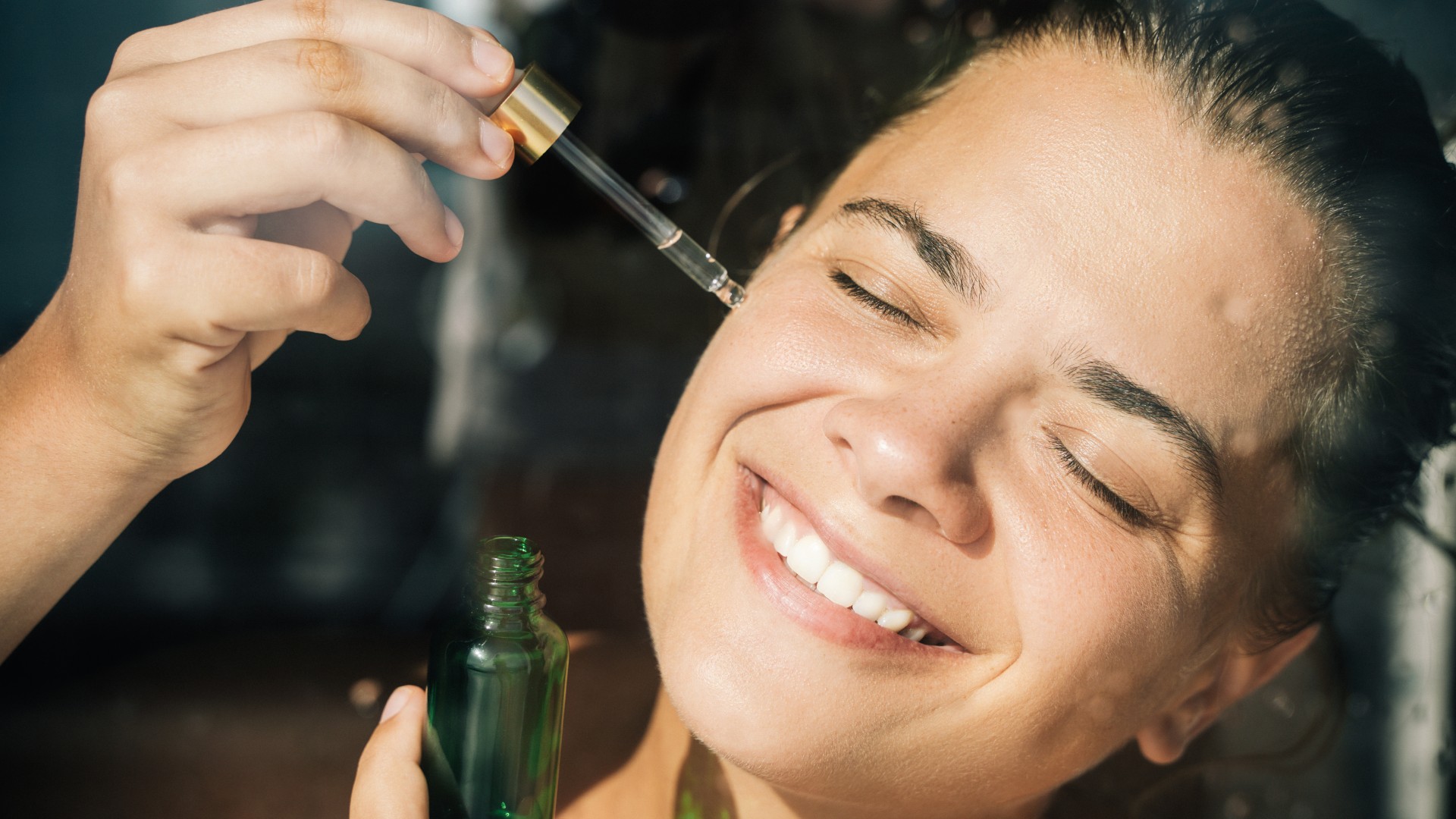
I’m the first to admit I feel and look better when I’m tan. As much as I love to be bronzed, I love reducing skin cancer risk a whole lot more. That’s exactly why I choose to be an sunscreen-covered, shade-sitting, UPF-wearing beauty editor. My silver lining: The best tanning drops I've tested allow me to stay safe from the sun’s harmful rays while looking like I spent my weekend sprawled out on a tropical island.
Mousses and spray self-tanners are great, but I prefer adding a few tanning drops into my moisturizer for an even, customizable glow. And while it's easy to think of the best tanning drops as magic in a bottle (simply apply and poof, eight hours later your face is glowing) the science behind them isn't any different than your other favorite self-tanning products. Tanning drops usually utilize the ingredient dihydroxyacetone, or DHA, which creates a chemical reaction when exposed to your skin's outer layer. The tan develops gradually over 6 to 8 hours and lasts about 5 to 7 days, fading as the skin exfoliates.
What's more? There are formulas unique to sensitive skin and acne-prone skin, options that contain skin-supporting nutrients (like vitamins C and E), options that will wash off when you wash your face, and even drops that promise a more palatable scent. To bring a little color into your skin no matter the season, read on to shop the best tanning drops we've ever tried.
The Best Tanning Drops
- The Best Tanning Drops Overall: Tan Luxe THE FACE Illuminating Self-Tan Drops
- The Best Tanning Drops for Sensitive Skin: Lux Unfiltered N°12 Bronzing Face Drops
- The Best Drugstore Tanning Drops: SOL by Jergens Deeper By The Drop Face and Body Serum
- The Best Tanning Drops for Acne-Prone Skin: St. Tropez Tan Tonic Glow Drops
- The Best Brightening Tanning Drops: Isle of Paradise Self Tanning Natural Glow Face Drops
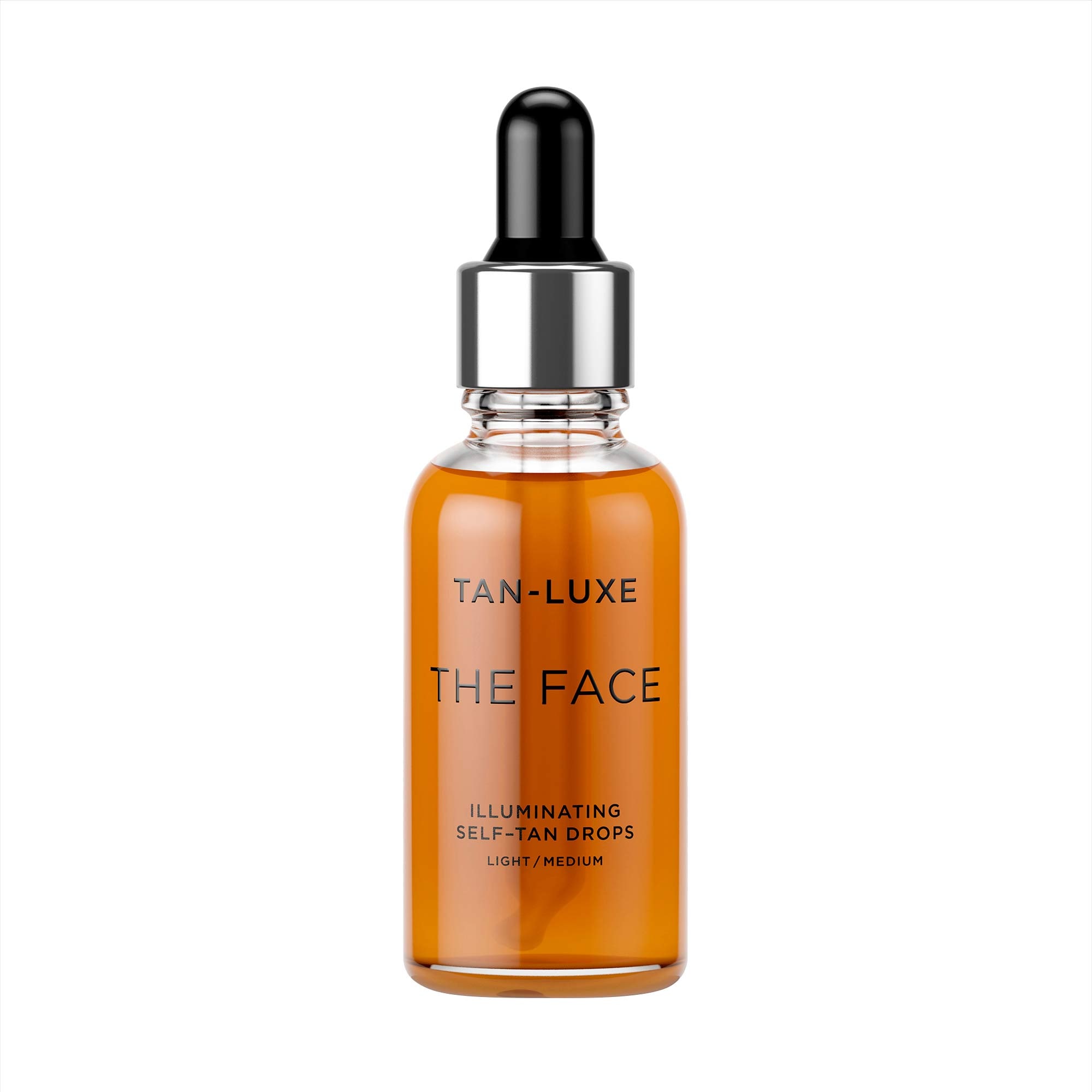
Tan Luxe's Self-Tan Drops are packed with dermatologist-approved benefits, placing them at the top of the list. As Dr. Dowling notes, the formula comes in two shades for a customizable tan and contains ingredients to keep skin healthy and hydrated. (Those include antioxidants like vitamin E and hydrating aloe vera.) Don't stress about clogged pores; these drops are also non-comedogenic.
Size: 1.01 fl. oz
Key Ingredients: Raspberry seed oil, aloe vera, vitamin E
Customizable: Yes
Drops Needed: 1-4
Development time: 2-4 hours
Pros: Smell pleasant; Customizable tan
Cons: Expensive
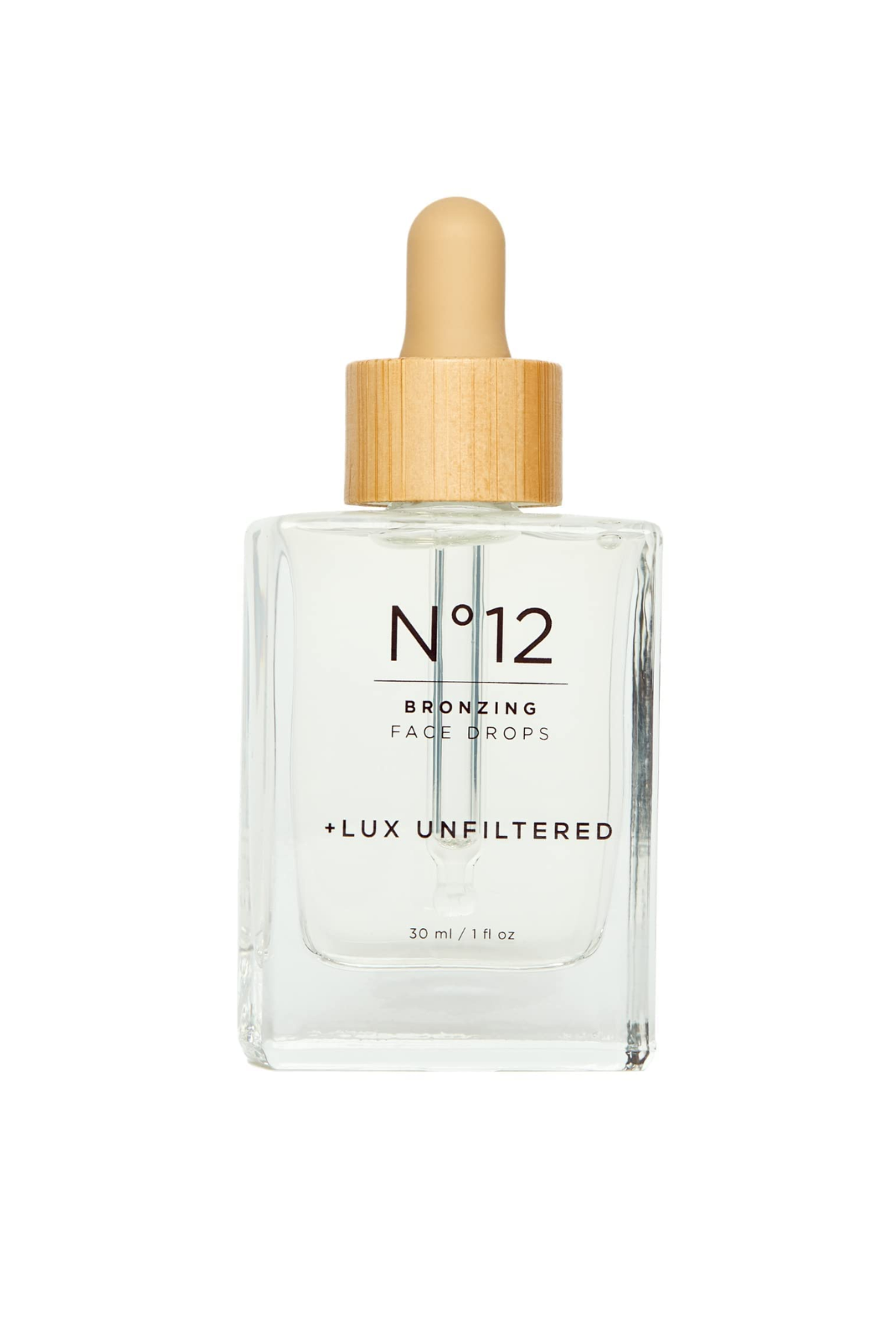
Fragrance-free and packed with antioxidants, it’s no surprise that Lux Unfiltered is my personal tanning drop go-to. I mix a casual two drops into my moisturizer (I like a very subtle tan—and I’m pale) and proceed with my routine as normal. There’s never pilling or irritation; I simply start to notice a soft bronze tone take up residence on my complexion. Another huge plus? It doesn’t smell at all, either.
Size: 1 fl. oz.
Key Ingredients: Hyaluronic Acid, Coconut Water, Apple Fruit Extract, Passion Fruit Oil, Pomegranate Extract
Customizable: Yes
Drops Needed: 4-8
Development time: Results visible in a few hours, 24-48 hours for full development
Pros: Customizable; Buildable; Doesn’t smell
Cons: Fades quickly
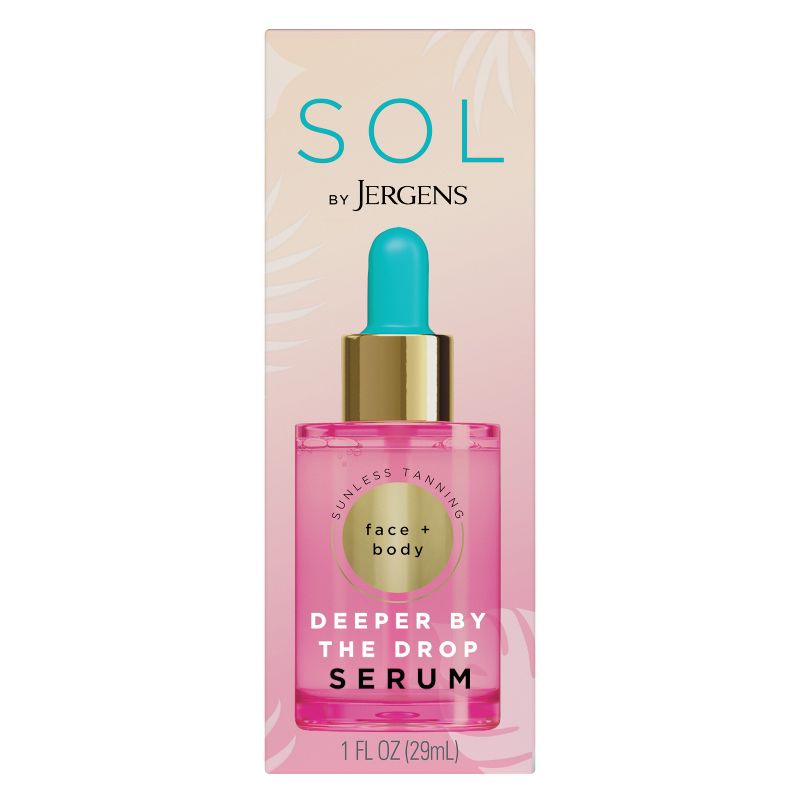
Jergens' self-tanning moisturizer is the OG self tanner; the brand knows exactly what it's doing in the sunless tanner department. Cut to: Sol by Jergens, a new launch that comes in dropper form. All you have to do is mix your desired number of drops in with your face or body lotion and allow your tan to develop over the course of a few hours. It may take a little trial and error to figure out your ideal dosage, but once you do, you’ll be in business.
Size: 1 fl. oz.
Key Ingredients: Coconut water
Customizable: Yes
Drops Needed: 3-15
Development time: Results visible in 4 hours
Pros: Affordable; Can be used on body
Cons: Contains fragrance, which isn’t great for sensitive skin types
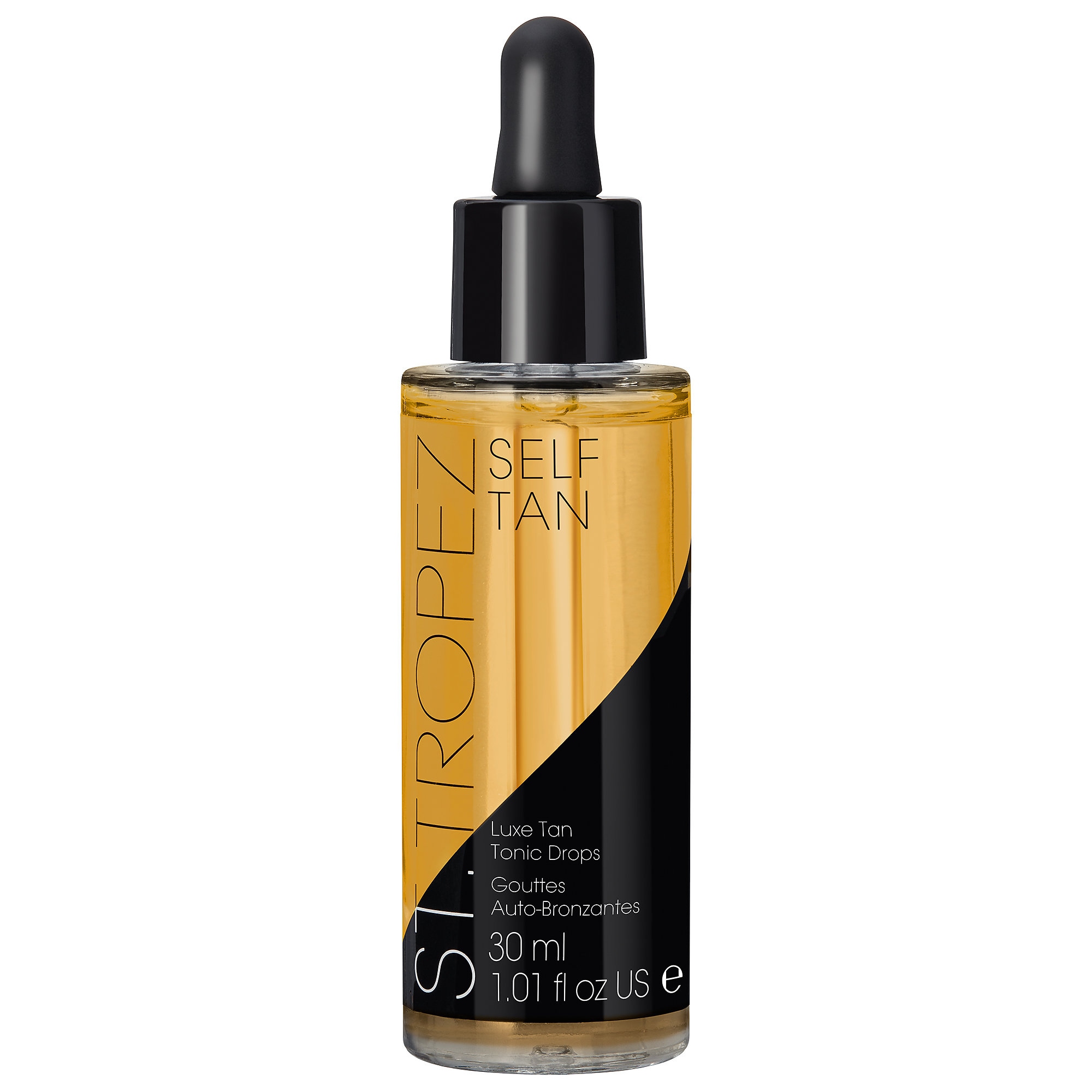
“These tanning drops have antioxidants (vitamin C and D) and hydrating ingredients (hyaluronic acid and niacinamide) to keep your skin healthy, plump, and hydrated,” says Dr. Dowling. “They can give you a sunless tan and also help fight against fine lines and aging." Additional benefit: They're non-comedogenic for clean pores.
Size: 1.01 fl. oz.
Key Ingredients: Hyaluronic acid, niacinamide, acerola cherry, detoxifying flower complex, vitamin E, echinacea
Customizable: Yes
Drops Needed: 2-6
Development time: 4-8 hours
Pros: Brightening properties; Dermatologist-recommended
Cons: Doesn’t have amazing color pay off
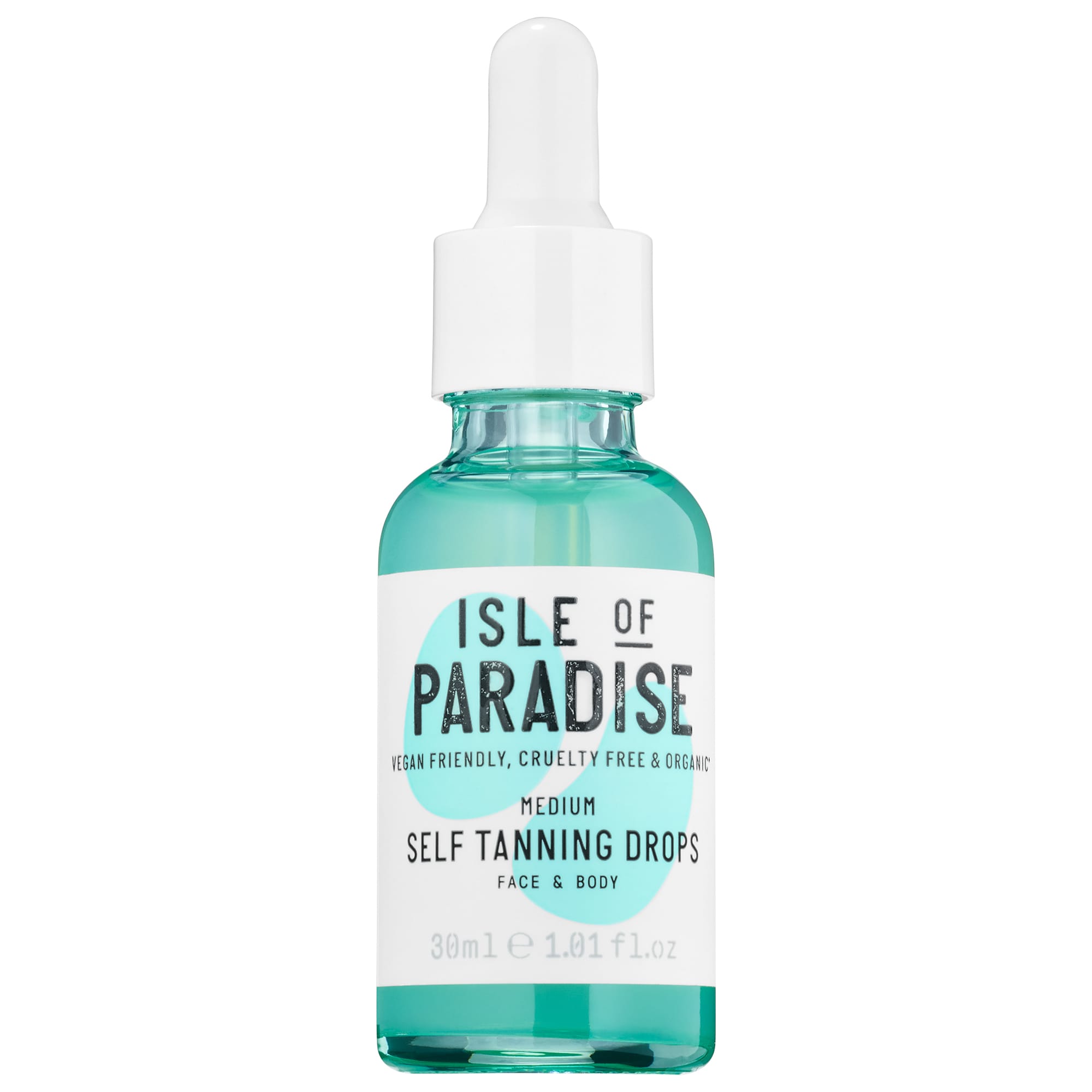
With three different options to match to your skin tone, these tanning drops are ideal for achieving a bronzed complexion that doesn’t look orange. While a lot of other products require a little bit of dosage guessing, this particular formula makes the process fairly straightforward. Plus, it's packed with skin-brightening ingredients like vitamin C to ensure your skin looks both tan and radiant. The color will last up to five days, but you should start to notice a lasting glow with regular use.
Size: 1.01 fl. oz.
Key Ingredients: Vitamin C, avocado
Customizable: Yes
Drops Needed: 2+
Development time: 4-6 hours
Pros: Different shades; Packed with vitamin C
Cons: Noticeable scent
Also Recommended
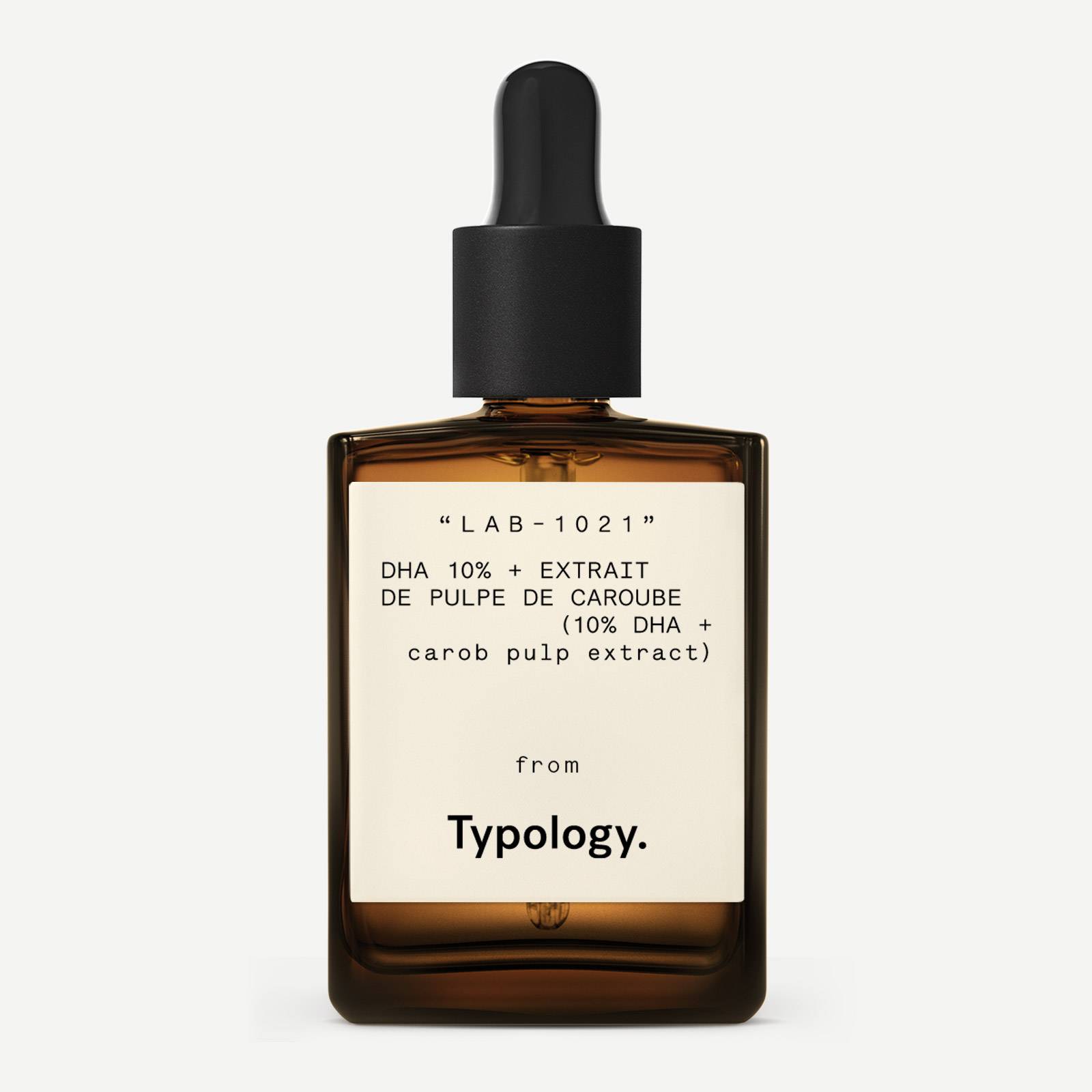
With all natural ingredients, this serum prides itself on its vegan yet highly effective composition. It uses bio-engineered DHA, alongside carob pulp, an active molecule that stimulates the skin’s natural tanning process. In the end, you’re left with a serum that creates a longer lasting, deeper tan in a quicker timespan. You have the option of mixing it in with a moisturizer (more natural effect) or applying product straight to the skin (more intense effect). Either way, just make sure you apply an even amount to every area of your face.
Size: 1 fl. oz.
Key Ingredients: Extract of carob pulp, erythrulose, buriti oil
Customizable: Yes
Drops Needed: 2-6
Development time: Results visible after 6 hours
Pros: Vegan; Can be used straight on the skin
Cons: Some say it can be blotchy
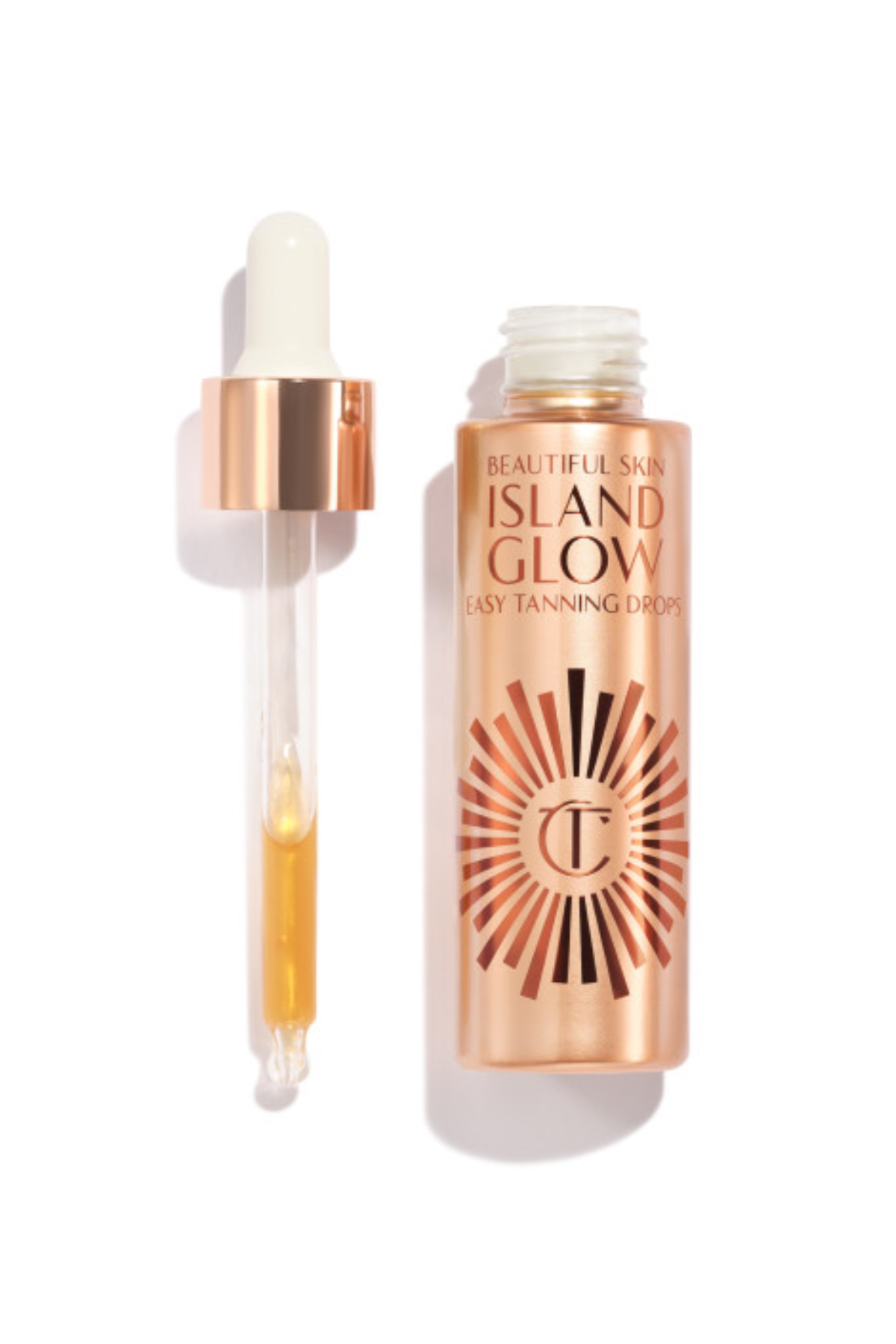
There's something to be said for a tanning drop that feels more like a luxurious serum than a concoction that's about to have a chemical reaction with your dead skin cells. Charlotte Tilbury's first ever self tanner was released in Spring 2024 and quickly became a favorite of freelance beauty writer Sophia Vilensky. She actually puts a couple drops of the glowy formula on before moisturizer, because it feels so good on its own.
Size: 1 fl. oz.
Key Ingredients: Hyaluronic acid
Customizable: Yes
Drops Needed: 2-12
Development time: 6-8 hours
Pros: Contains skin-loving ingredients like hyaluronic acid; Helps smooth the appearance of skin; Customizable tan
Cons: Only two shade options are available
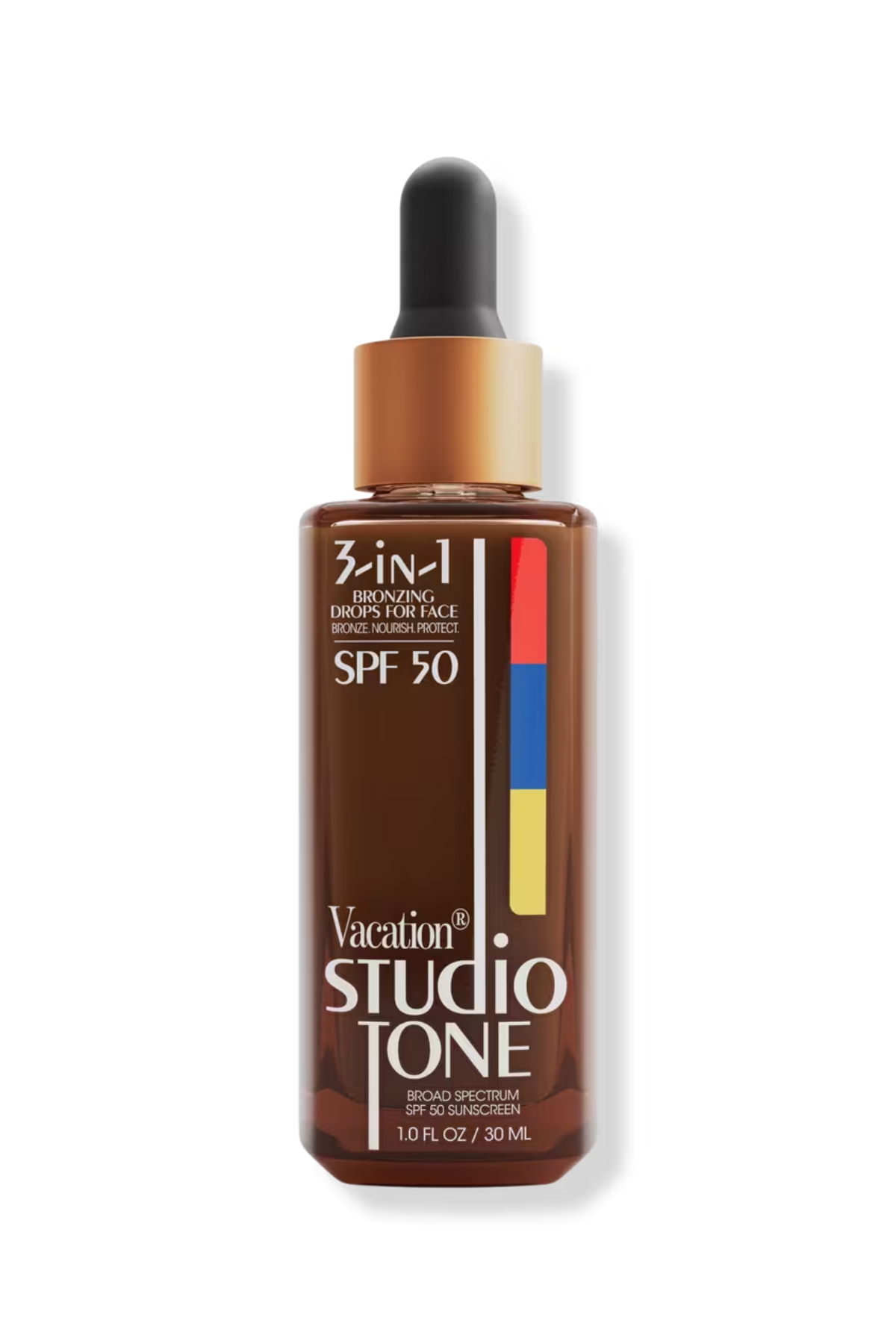
With their cheeky vintage packaging and formulas that can do no wrong, Vacation's SPF products quickly ascended to the top shelfs of the coolest and most sun-conscious consumers. While not a self tanner in the traditional sense, their Bronzing Drops offer a wash-off, studio-quality bronzed glow thanks to natural mineral pigments and most importantly contain SPF 50. Layer for a customizable glow that offers more and more UVA and UVB protection as you go.
Size: 1 fl. oz.
Key Ingredients: Hyaluronic acid, niacinamide, natural mineral pigments, cocoa, hazelnut, ceramides, collagen peptide, ferulic acid, vitamin E, algae
Customizable: Yes
Drops Needed: Entire dropper
Development time: N/A
Pros: Multitasking formula; Contains SPF; Super fun packaging
Cons: Not the right choice if you want a lasting tan
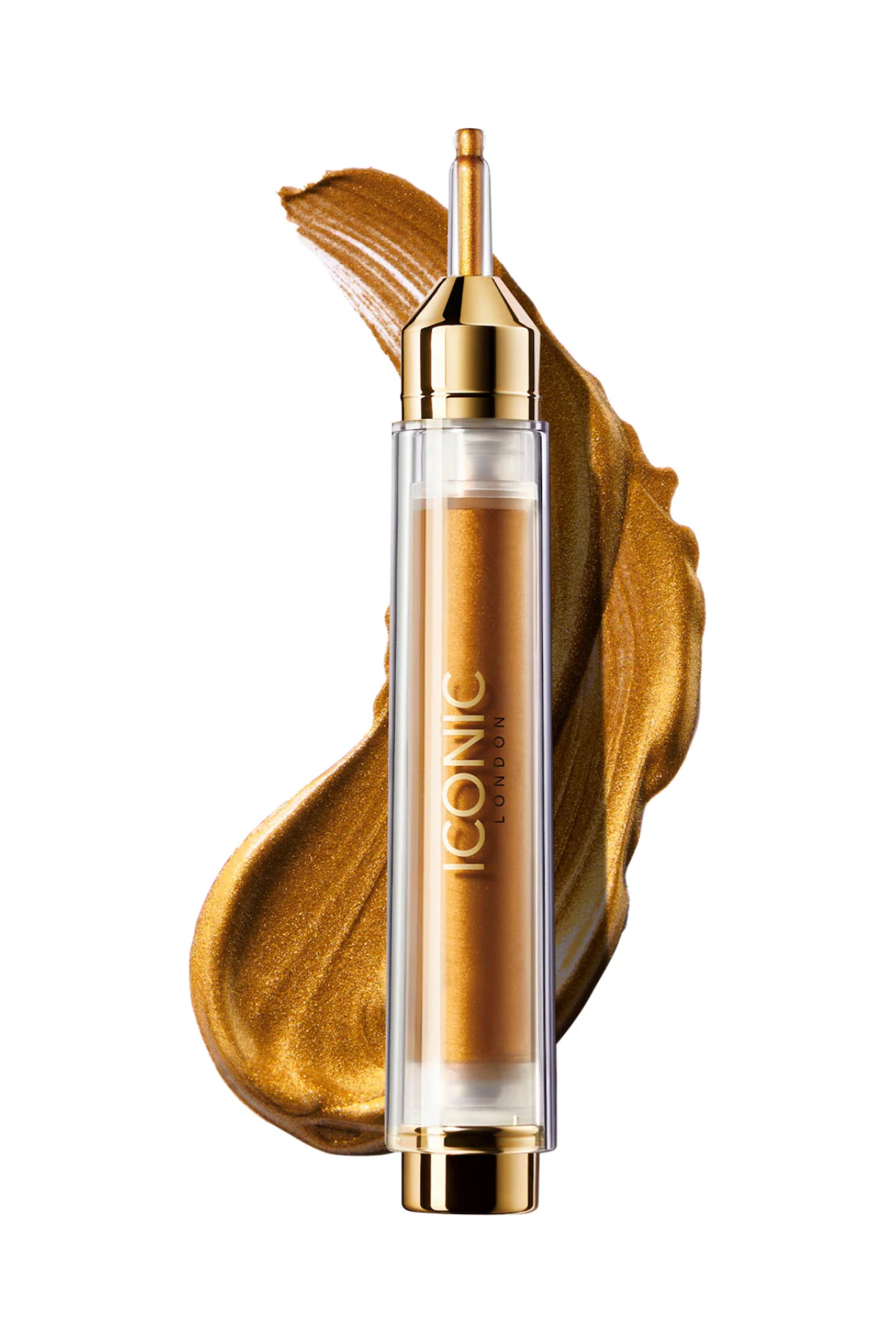
This one also isn't technically a tanning drop, but hear us out. Iconic London's super-concentrated bronzing drops were crafted to give your skin "a halo of holiday goodness" any time, any place. And unlike actual vacation where more is more, a little goes a long way here—a couple drops add major warmth and color that you don't need to wait to see develop.
Size: 0.43 fl. oz.
Key Ingredients: Chamomile, emollient esters, refined pearl
Customizable: Yes
Drops Needed: 1-2
Development time: N/A
Pros: Concentrated; Offers a lovely glow; Can be worn on its own or combined with other moisturizers/serums
Cons: May be too shimmery for some people's taste
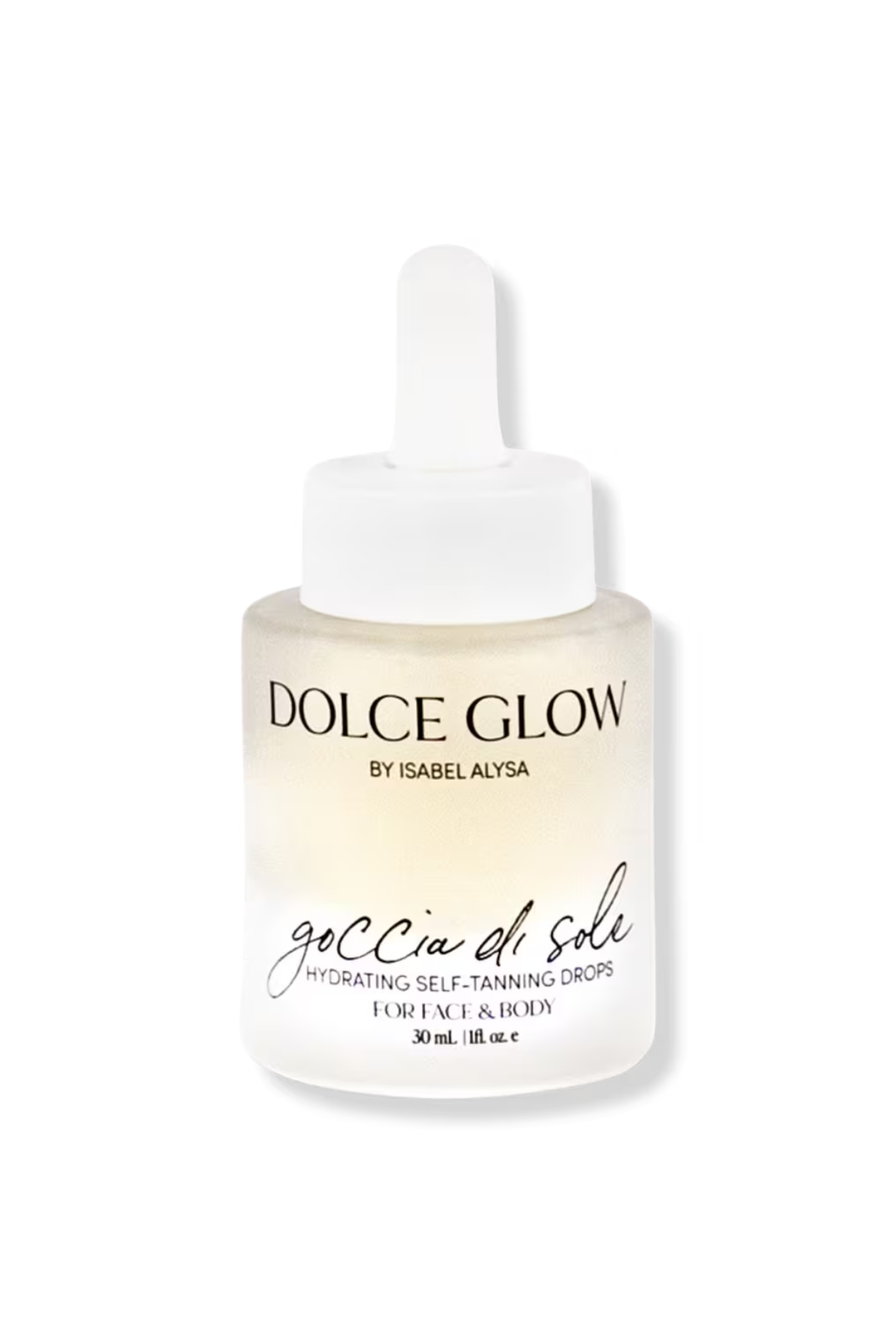
Celebrity tan artist Isabel Alysa's Dolce Glow is the brand responsible for Miley Cyrus's 2024 Grammys tan, which very quickly entered the glow-y superstar hall of fame. And while their entire self tanning line is great (we especially love their mist for those with pale skin!), their hydrating self tanning drops are something special. Great for the face and body, you can mix these in with any hydrating step in your skincare routine for a buildable, healthy-looking glow.
Size: 1 fl. oz.
Key Ingredients: Aloe vera, cranberry extract, caffeine, erythrulose, sodium hyaluronate, jojoba seed oil, Australian macadamia oil, saccharum officinarum extract
Customizable: Yes
Drops Needed: 1-4
Development time: 4-6 hours
Pros: Contains skin-loving ingredients; Dermatologist tested; Streak free
Cons: None found

While most self tanners will change the tone of your skin for a few days, these Drunk Elephant drops let you wash off the tint whenever you want. In practice, it’s a product that applies more like makeup, bestowing a temporary bronze glow to the skin. Take a close look at the ingredients and you’ll see that it’s straight skincare. You’ll find vitamin D, hyaluronic acid, peptides, and soothing properties in the mix, so your skin is left protected and hydrated.
Size: 1 fl. oz.
Key Ingredients: Cocoa extract, peptides, chronocyclin
Customizable: Yes
Drops Needed: 1+
Development time: N/A
Pros: Gives a golden finish; Skincare ingredients
Cons: Not the right choice if you want a lasting tan
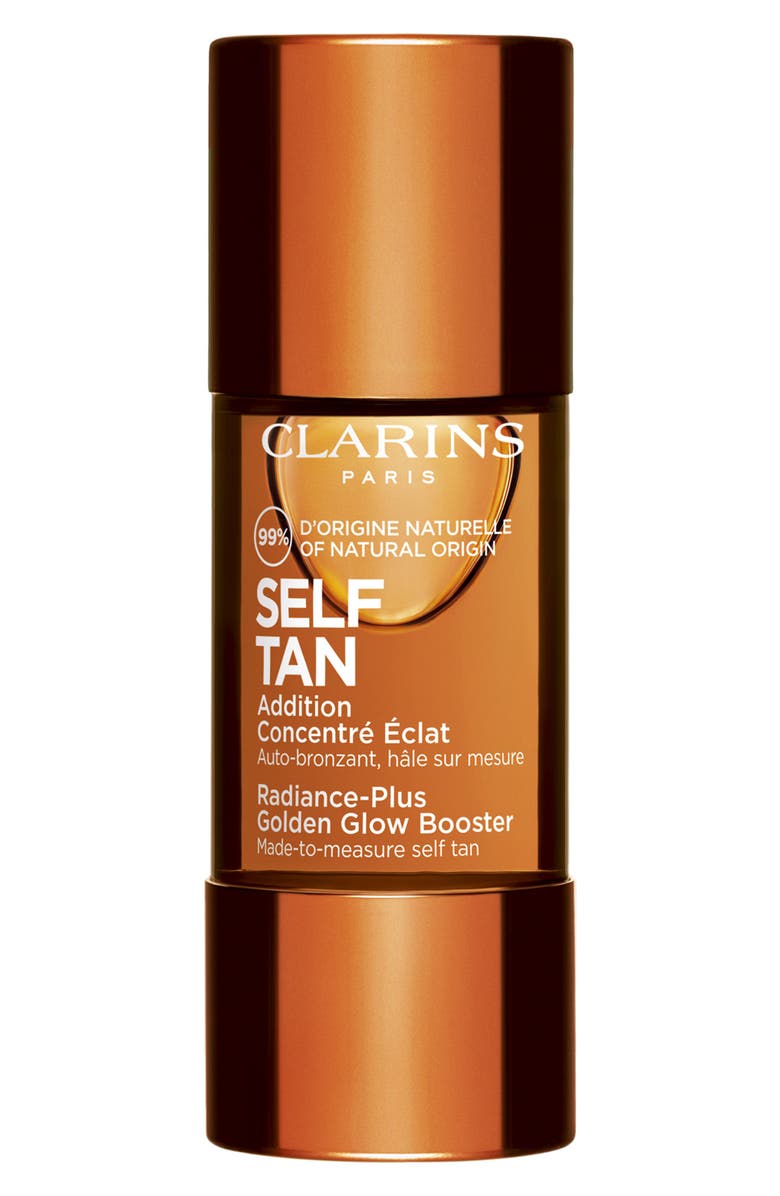
If blotchiness is your main pain point with tanning drops, I challenge you to try this Clarins booster. A little goes a long way, and so long as you completely rub your moisturizer into your skin, you’ll end up with a completely even “tan.” It magically matches your skin tone, creating the perfect bronze for your complexion. The color lasts a decent amount of time; I typically reapply twice throughout the week for constant color.
Size: 0.5 fl. oz.
Key Ingredients: Aloe vera, glycerin
Customizable: Yes
Drops Needed: 2-3
Development time: 3-4 hours
Pros: Even color; Not orange
Cons: Expensive
What Are Tanning Drops?
"Tanning drops are basically a concentrated version of a self tanner that you can add to moisturizer for a gradual and even color boost," explains celebrity makeup artist Judi Gabbay Braha. Just like a self tanning mousse or lotion, self tanning drops contain an active ingredient called dihydroxyacetone (DHA), which causes a browning reaction on the skin. The tint happens over the course of a few hours and is customizable in intensity.
While the results are largely welcome, DHA is known to have a certain scent that some find unpleasant. The best tanning drops will seek to minimize the smell, and include additional ingredients that boost skin hydration.
What to Look For
- A Non-Comedogenic Formulation
If you’re prone to breakouts, you know that finding non-comedogenic formulas is key to clear skin. “If you’re acne-prone, look for formulations that are labeled as oil free, so that they don’t clog your pores,” board-certified dermatologist Dr. Jessica Dowling recommends.
- Other Ingredients for Your Skin Type
While essentially every tanning drop will contain DHA, the ingredient that gives your skin a little bronze hue, you’ll also find a handful of star ingredients on the INCI list. Depending on your skin type, it’s beneficial to pay close attention. “If you have sensitive or eczema-prone skin, I would avoid products with dyes and fragrances,” says Dr. Dowling. If your skin is on the dry side? Seek out hyaluronic acid or niacinamide. For an extra brightening boost, look for vitamin C-infused formulas.
How to Prep for Tanning Drops
Exfoliating your skin with some form of scrub is the most crucial part of preparation for a self tanner, including tanning drops for your face. Sloughing away dead skin cells helps prevent patchiness or product clumping. "Like any start to glam, a nice light exfoliation is recommended beforehand," Braha recommends. "Don’t go overboard and use abrasive products—the goal is to get an even base so that the color distributes evenly."
Consider using a chemical exfoliant, like a glycolic or lactic acid serum, a day or two before applying your self tanner. If your skin is noticeably flaky or rough, you may want to try a physical exfoliant, such as a micro-fine scrub, to create the softest, smoothest base possible.
How to Apply Self Tanning Drops
Applying self tanning drops to your face is a fairly intuitive and simple process. The directions will differ from product to product (be sure to read the packaging!), but generally, you'll want to apply product to a freshly cleansed face. "For an even application, add a few tanning drops into you moisturizer and buff with a fluffy brush, being mindful of your neck, ears and hairline," advises Braha. Because the moisturizer serves as a delivery system, getting an even tan is relatively easy. If applying moisturizer with a brush isn't for you, use your hands to massage the product directly onto your skin in small circles—just make sure to thoroughly wash your hands after the fact.
Unless you're using bronzing drops, don't expect to see the effects of the tanning drops right away. The color should develop over the course of a few hours.
Do Tanning Drops Work on All Skin Tones?
Tanning drops are not one-size-fits-all, so you won't want to treat them as such. Instead, Braha recommends looking for a line with the same product in various shades. "For fairer skin, you won’t want to go in with a product meant for deeper skin tones and vice versa," she says.
Most products will come in at least three different skin tone variations (light, medium, dark), but other will instruct you to simply use more product to achieve a tanned version of your skin tone. "You can customize the amount of drops used for how much color you’re looking to achieve," Braha adds. "As it's best to apply gradually, start with a minimal amount and see how the product reacts with your skin tone."
How to Make Self Tanning Drops Last Longer
Even the best tanning drops are not designed to last forever—the tint they provide your skin will naturally fade over the course of three to five days. Still, there are a few tips and tricks to squeeze a little extra time out of your faux tan.
The most effective way: Keeping your skin moisturized. "As long as your skin stays hydrated, your tan will last longer," Braha notes. You'll also want to avoid using exfoliating products (chemical and physical) as well as any retinoids while tanning drops are in the mix, as they'll speed up the fading process by revealing a fresh layer of skin.
"If your tan is fading, add more drops to your moisturizer and re-up," Braha recommends. Tanning drops are designed to be layered and buildable, so feel free to reapply product every few days.
Meet the Experts

Judi started her journey as a makeup artist at the young age of 13 years old. Working summers at a beauty store, she swept floors and did simple inventory all to be a part of the magic of makeup. Finding her passion at a young age enabled her to hone her talents through dedication and the desire to learn. Not so shortly after, Judi was being flown around the world for her talents. She has shot for brands such as BEBE, Catherine Malandrino, Buxom Cosmetics, and English Laundry. She's worked with networks such as Bravo, TLC, ABC, and more. Judi continues to create polished and flawless looks for all of her clientele.

Jessica R. Dowling, MD, is a medical and cosmetic dermatologist at the Skin Institute of NewYork (SINY). Dr. Dowling treats both adult and pediatric dermatology patients at SINY’s offices inthe West Village of Manhattan and the Park Slope area of Brooklyn. Furthermore, Dr. Dowling isa committed educator, currently serving as a clinical instructor of Dermatology at NYU, whereshe teaches residents about medical and cosmetic dermatology in weekly clinics.
After graduating with a Bachelor of Arts degree from Vanderbilt University, Dr. Dowling earnedher medical degree from Florida Atlantic University Schmidt College of Medicine. During hertime in medical school, she was inducted into the prestigious Alpha Omega Alpha HonorMedical Society. Subsequently, Dr. Dowling completed her dermatology residency at SUNYDownstate in Brooklyn, NY, where she held the position of Chief Resident of CosmeticDermatology and the Estée Lauder Research Fellow. She has presented her research atnumerous national conferences and has multiple publications in peer-reviewed journals.Additionally, she is an active member of the American Academy of Dermatology.
Get exclusive access to fashion and beauty trends, hot-off-the-press celebrity news, and more.

Samantha Holender is the Senior Beauty Editor at Marie Claire, where she reports on the best new launches, dives into the science behind skincare, and shares the breakdown on the latest and greatest trends in the beauty space. She's studied up on every ingredient you'll find on INCI list and is constantly in search of the world's glowiest makeup products. She's constantly tracking the biggest nail and hair trends to pop up in the beauty space, going backstage during fashion weeks, tracking celebrity looks, and constantly talking to celebrity hair stylists, nail artists, and makeup artists. Prior to joining the team, she worked as Us Weekly’s Beauty and Style Editor, where she stayed on the pulse of pop culture and broke down celebrity beauty routines, hair transformations, and red carpet looks. Her words have also appeared on Popsugar, Makeup.com, Skincare.com, Delish.com, and Philadelphia Wedding. Samantha also serves as a board member for the American Society of Magazine Editors (ASME). She first joined the organization in 2018, when she worked as an editorial intern at Food Network Magazine and Pioneer Woman Magazine. Samantha has a degree in Journalism and Mass Communications from The George Washington University’s School of Media and Public Affairs. While at GWU, she was a founding member of the school’s HerCampus chapter and served as its President for four years. When she’s not deep in the beauty closet or swatching eyeshadows, you can find her obsessing over Real Housewives and all things Bravo. Keep up with her on Instagram @samholender.
- Sophia VilenskyFreelance Writer